Shadow of the Bat
OCTOBER 20, 2022 BY RAY CARSILLO
No matter when Warner Bros. decided to revisit Batman in an open-world video game, it was never going to be an easy task. The Arkham series proved to be a pinnacle for the Dark Knight in digital form, and whatever came next would be held in direct comparison to that series in a lot of ways. After seven years since the last original Arkham game, WB Montreal—whose pedigree is proven from their work on Batman: Arkham Origins—has finally emerged from the shadows to take a crack at this Bane-sized endeavor with its new game Gotham Knights: an open-world action-RPG about the Bat-family taking over the crime fighting reins for a suddenly deceased Batman.
Although the game starts similarly to the end of the Arkham series, with Batman destroying the Batcave and Wayne Manor, it is not a continuation or even set in the same universe. The Batcave blows up under very different circumstances here as it’s to stop Ra’s al Ghul, who has infiltrated the cave looking to end his feud with “the detective” once and for all. As Batman has been apt to do in different media, he makes the heroic sacrifice, leaving the final case he was working on—digging into the secret society known as the Court of Owls—to his protégés. Now, players can choose to play as Robin, Batgirl, Nightwing, or Red Hood as they try to bring peace back to Gotham City, stop familiar foes from taking advantage of Batman’s absence, and also honor his memory by solving the unsolvable case.
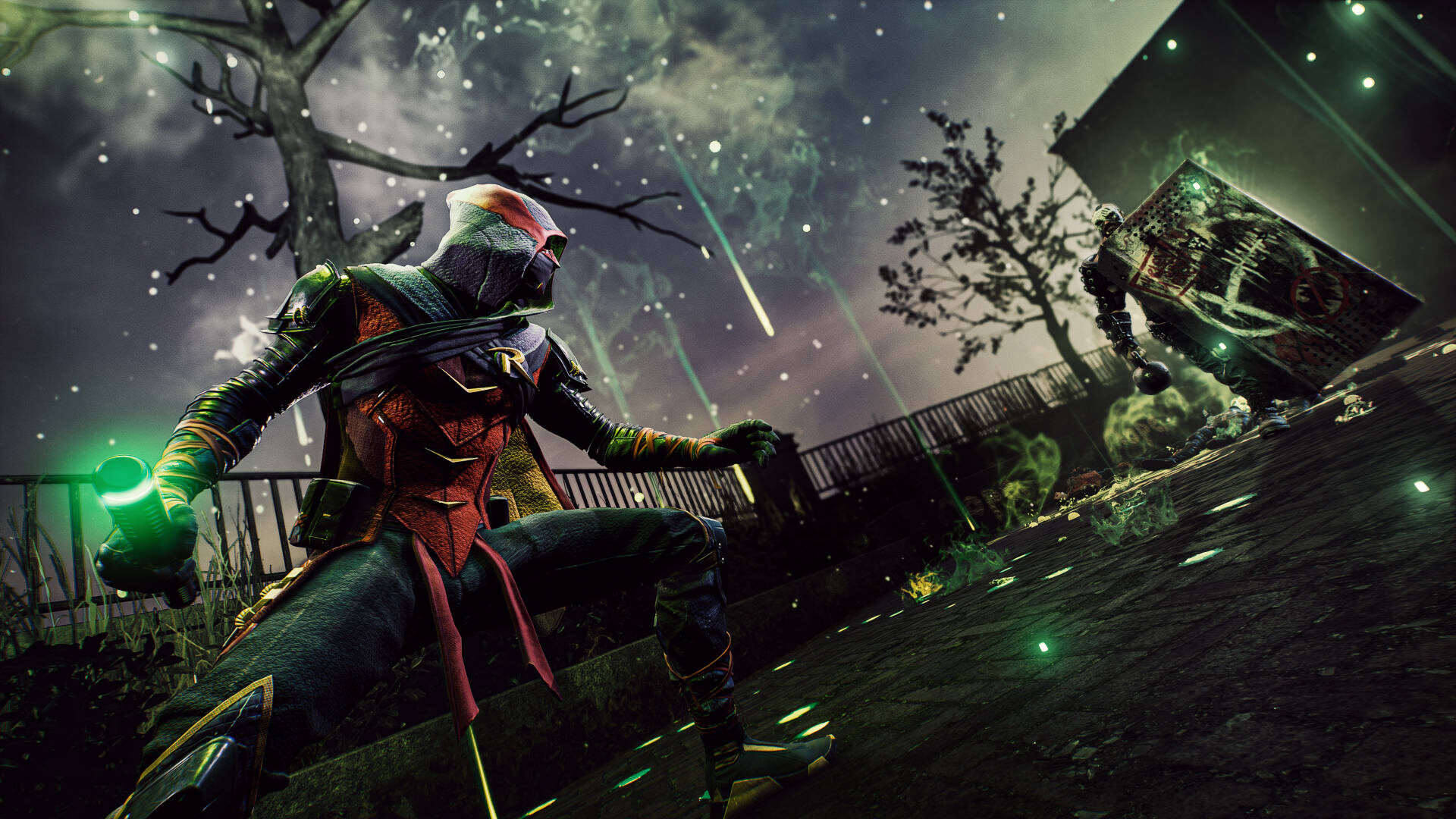
With the Batcave destroyed, the Bat-family has moved everything they could salvage to the Belfry, a clocktower in central Gotham that Batgirl used during her Oracle days. Even dear old Alfred, who fortunately was out of town at the time of Ra’s al Ghul’s home invasion, moves in to provide advice and help forward major story or character beats. In the Belfry, you can customize your heroes with dozens of different available looks, take on training missions, talk with others to flesh out the world and their relationships, and most importantly, plan your next night of crime fighting in this all-in-one hub.
From this hub, players will set out on missions around an open-world Gotham City in an attempt to track down the Court of Owls. Just like the Bat-family does in the comics, your chosen vigilante is also tasked with going on patrol and keeping an eye on the denizens of the city. And remember, not every villain in Gotham wears clown makeup or carries an ice gun, so completing side missions that have you stopping crime ranging from bank robberies to organ trafficking is a critical component to the gameplay. Winning these encounters is one of the fastest ways to level up your character and acquire loot to better prepare for battles yet to come. And when you’ve completed your missions, or fought enough crime and brought a temporary peace to the city, you can return to the Belfry to end the night, restock your gear, and reset the map for another night of crime fighting.
Each character has their own strengths and weaknesses, and each really plays into a classic RPG archetype. Something I appreciated with Gotham Knights is that even as you level up with one character, the XP is shared across all four. Even gear is awarded to all four characters at major story milestones to encourage you to try multiple characters. What isn’t shared, however, is gear blueprints. These usually provide the best items in the game, and can only be constructed from raw materials found in the world or awarded for arresting bad guys. Normally, materials are pretty abundant, but you can only equip gear built from blueprints when you return to the Belfry. Doing this, however, automatically ends that night of patrolling and resets the map. So, if you go back too soon, non-story related crimes you have been tracking could end up unsolved.
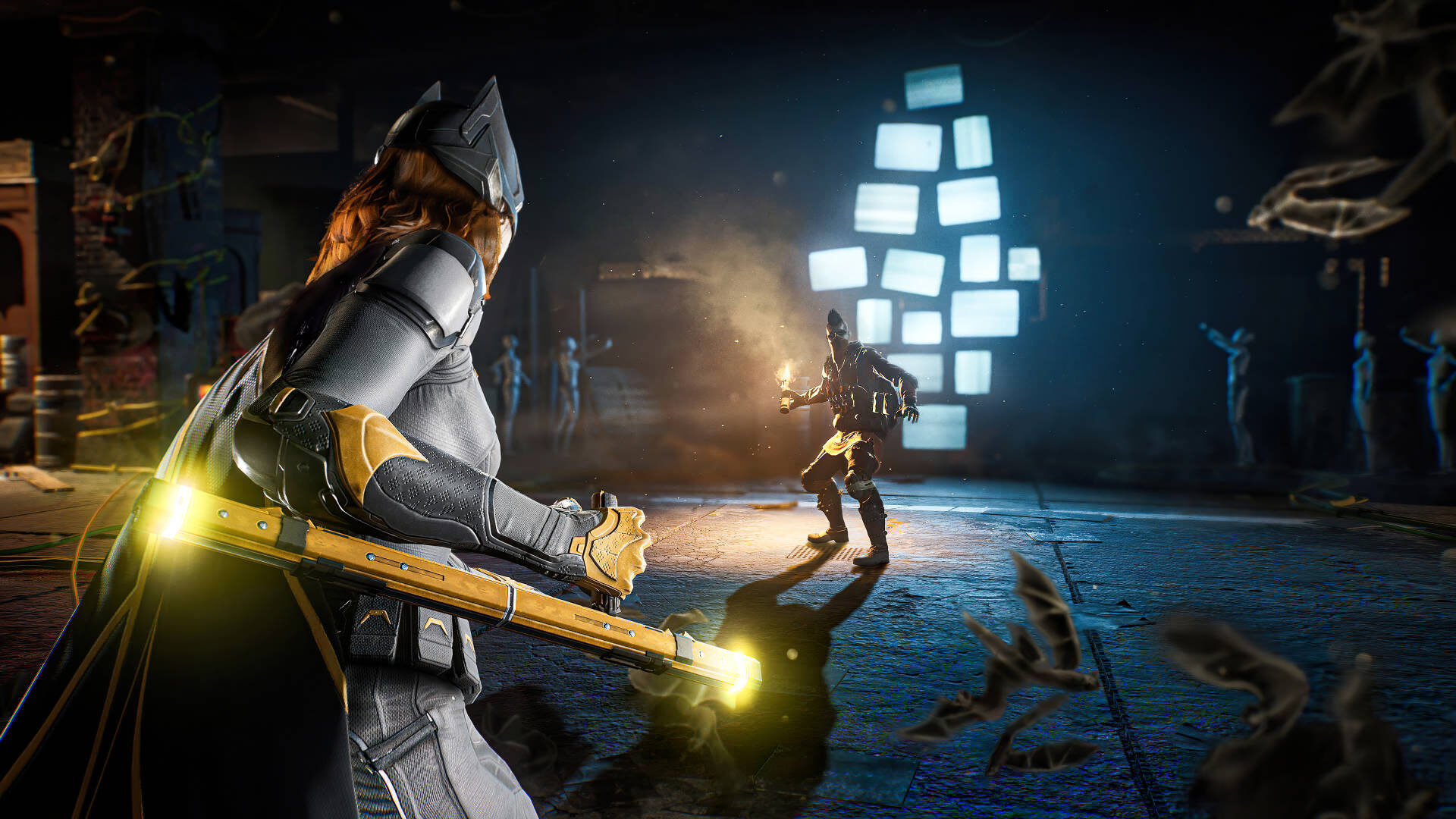
I found this to be a major drawback, because it meant the fastest way to bring my weakest Knight up to speed would be to grind for a night at a disadvantage, go back to the Belfry to acquire newly constructed items, and then go after story missions if I really wanted to use that particular character. Because of this, by the time I got towards the late game stages, I mostly just stuck with Batgirl, who plays a lot like Batman did in the Arkham games when fully powered. The only thing worse than an underleveled character is an underequipped one.
What also doesn’t carry over is beating challenges. Every character has to unlock their own way to better traverse Gotham’s rooftops, along with their own set of eight special moves, which can turn any combat confrontation to their advantage. Unlocking the traversal move is called reaching “Knighthood” and also unlocks the final of four skill trees the game offers, each playing into the character’s background. Batgirl can unlock a glide similar to Batman’s, Nightwing has a device called a “flying trapeze” that’s basically a rocket-powered mini-glider that lets him literally fly, Red Hood unlocks a special leaping ability that he taps into from his resurrection in the Lazarus Pit, and Robin hacks the Justice League Watchtower to short-range teleport—though it isn’t as cool or as effective as it sounds. Each of these has their own strengths and weaknesses, much like the heroes themselves, but they require each character to solve 10 different premeditated crimes around Gotham.
Until I was able to unlock what felt like a very basic maneuver, one given to us almost from the start of the Arkham games, traversal definitely felt somewhat neutered, forcing me to make these side challenges a priority. With there usually only being about a dozen premeditated crimes a night, and not being able to switch characters without returning to the Belfry, thus forcibly triggering the next night, it required multiple nights to really level up each character’s abilities evenly, and that continued with special abilities as well once I got beyond Knighthood.
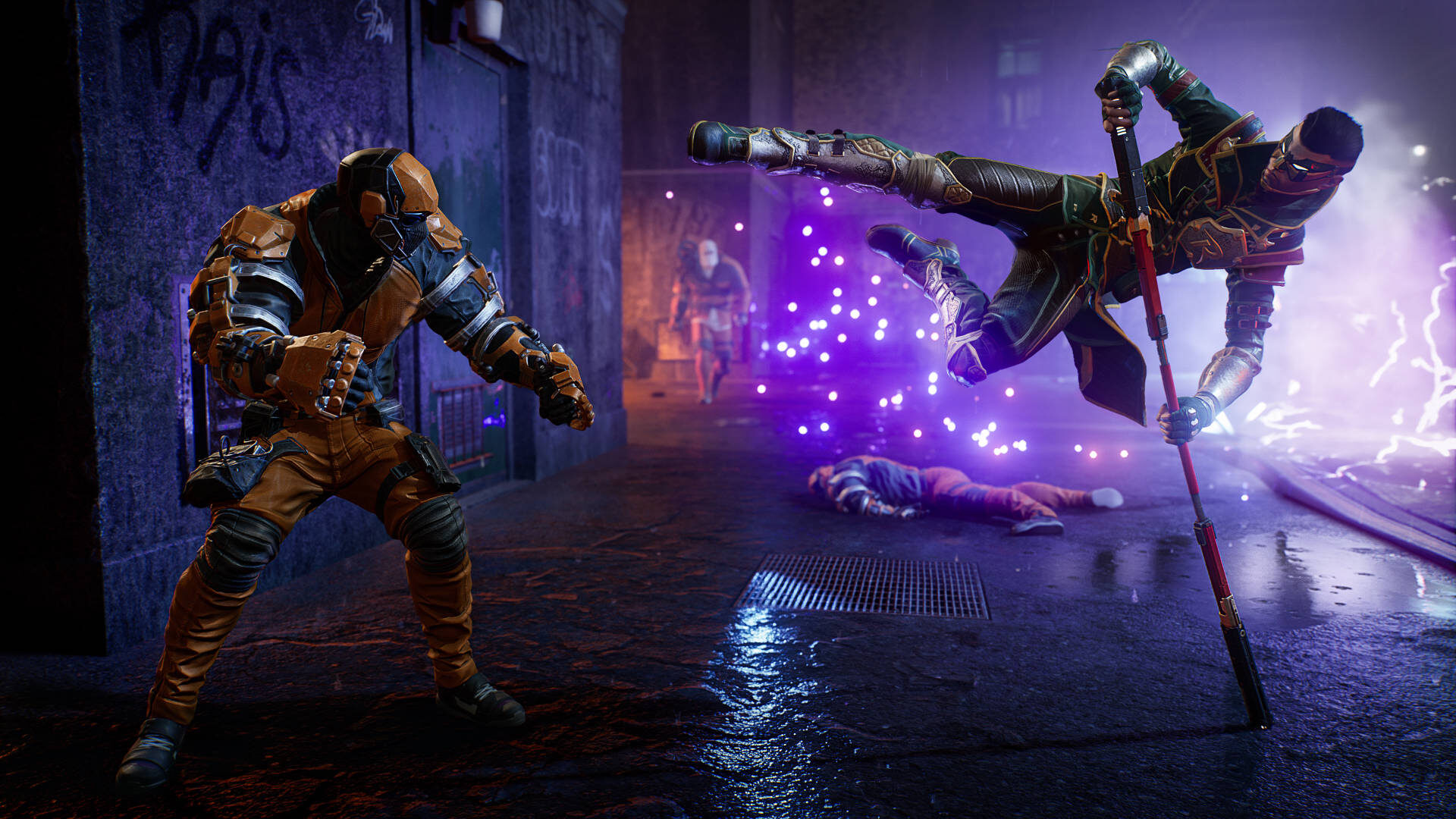
And this is where we get into Gotham Knights’ potentially biggest weakness. The bulk of the gameplay comes from stopping the same half-dozen or so serious crimes around Gotham being committed by one of five groups. Sometimes stopping these crimes even doubles as an objective in the story. The grind can be fun at times, and I admit I saw several hours slip away as I happily bounced around Gotham shoving evildoers’ faces into the pavement. But it does all become repetitive quickly, and when it doubles as a main story objective, it can feel it’s artificially bloating the game.
The reason for this bloat I believe and that street level crime is such a priority is it feels like there’s a general lack of content, and the game is a bit on the short side for something so heavily leaning into its RPG aspects in other ways. The level cap is only 30, though it increases to 40 in New Game+. The main story that follows the Court of Owls is well-written and cohesive, leaping right off the comic pages in several ways, but it’s only eight chapters with a couple of sub-chapters to each—and the only side villains with missions tied to them are those WB revealed in previews (Harley Quinn, Clayface, and Mr. Freeze). There are few, if any, surprises to the narrative if you’re familiar with Batman comics and lore.
There are a variety of collectibles scattered around if you’re obsessed with finding everything in the game, but it’s far from necessary to do so. There are also other open-world staples like time trials with the Batcycle (the only vehicle to survive the cave collapse) and for each individual character’s Knighthood traversal that can unlock some cosmetic options, but these again run into the issue that you can only complete one a night, and they only slightly inflate your total playtime.
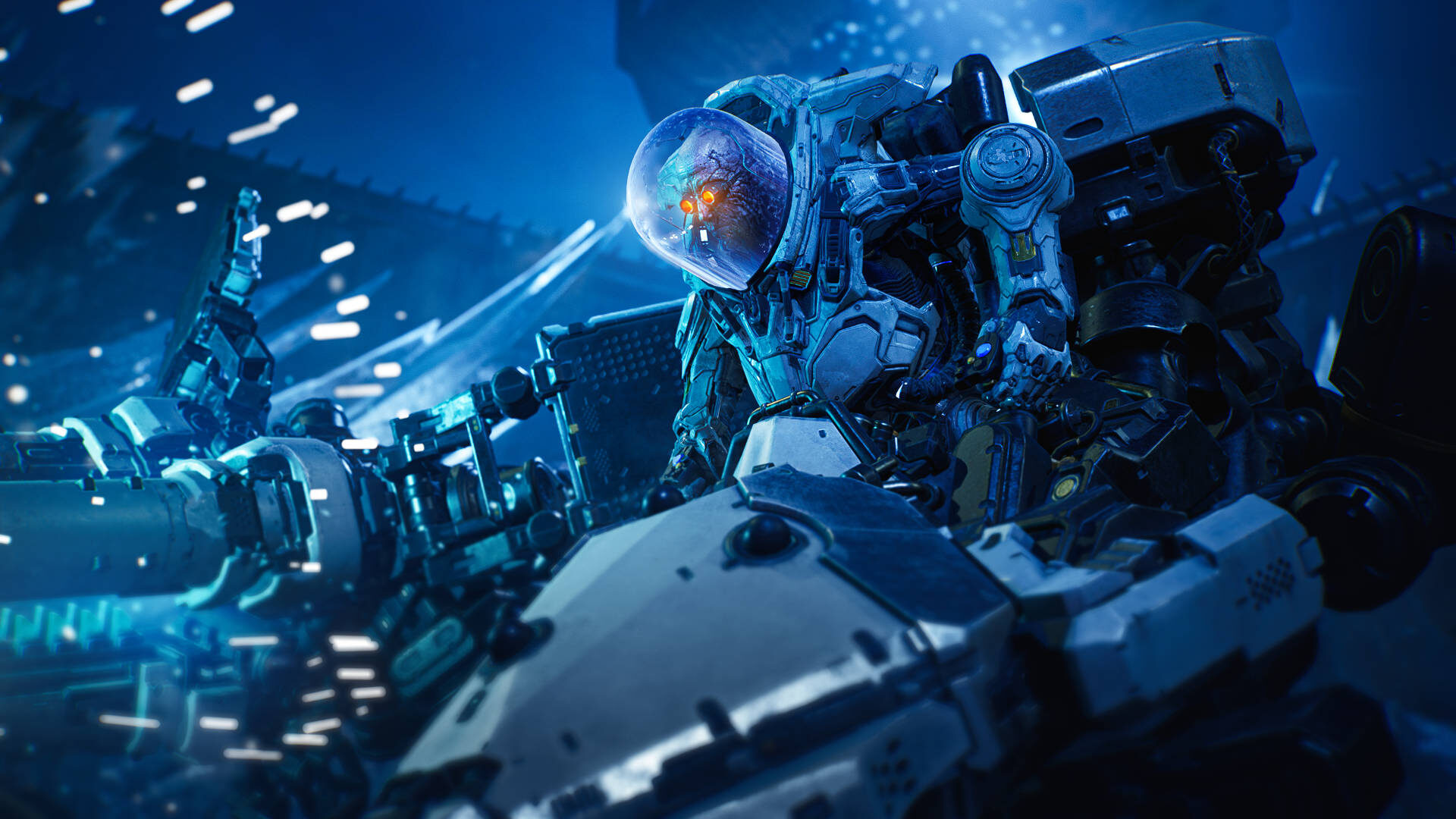
In contrast to this, Gotham Knights’ biggest success is easily its massive, open-world Gotham City. It’s beautifully designed to the point that you can feel the neon-backlit grunginess of Gotham almost oozing through your screen. It also pays homage to a variety of takes on Batman over the years with Easter eggs scattered throughout, such as monuments to legendary artists and writers like Neal Adams and George Perez. Weaving your way through traffic and down alleyways via the Batcycle is surprisingly satisfying, and feels like this should always be the preferred method of getting around Gotham when verticality isn’t necessary—especially if you still haven’t unlocked your Knighthood form of travel or fast travel.
Of course, once you decide what crime you’re going to try to stop, it’s time to spring into action. Gotham Knights has a much more open-ended feel to some of its combat than the Arkham games, in that there are no rooms dedicated to just having to be sneaky. You can choose when to utilize stealth and when to go in with guns blazing (figuratively of course, unless you’re Red Hood). Or, you can even change your strategy based on what character you’re playing as. Robin lends himself more to stealth, whereas Nightwing is definitely more of a brawler, for example. And as you unlock your special abilities (even if it is a grind), there are a variety of area of effect moves, elemental moves, and stun moves that can really change any scenario. Batgirl and Red Hood even have portable turrets for extra ranged offense.
Bonus XP is offered if you complete an encounter in a certain way to encourage a particular playstyle, but even that isn’t necessary. It’s not always easy to sneak up behind four guards and knock them out, or make sure that you defeat every henchman using ranged attacks. It at least offers a hint of variety to the somewhat cookie cutter encounters. Even when going into mission location interiors, how you get through each mission is left up to you, and I did appreciate that freedom of choice.
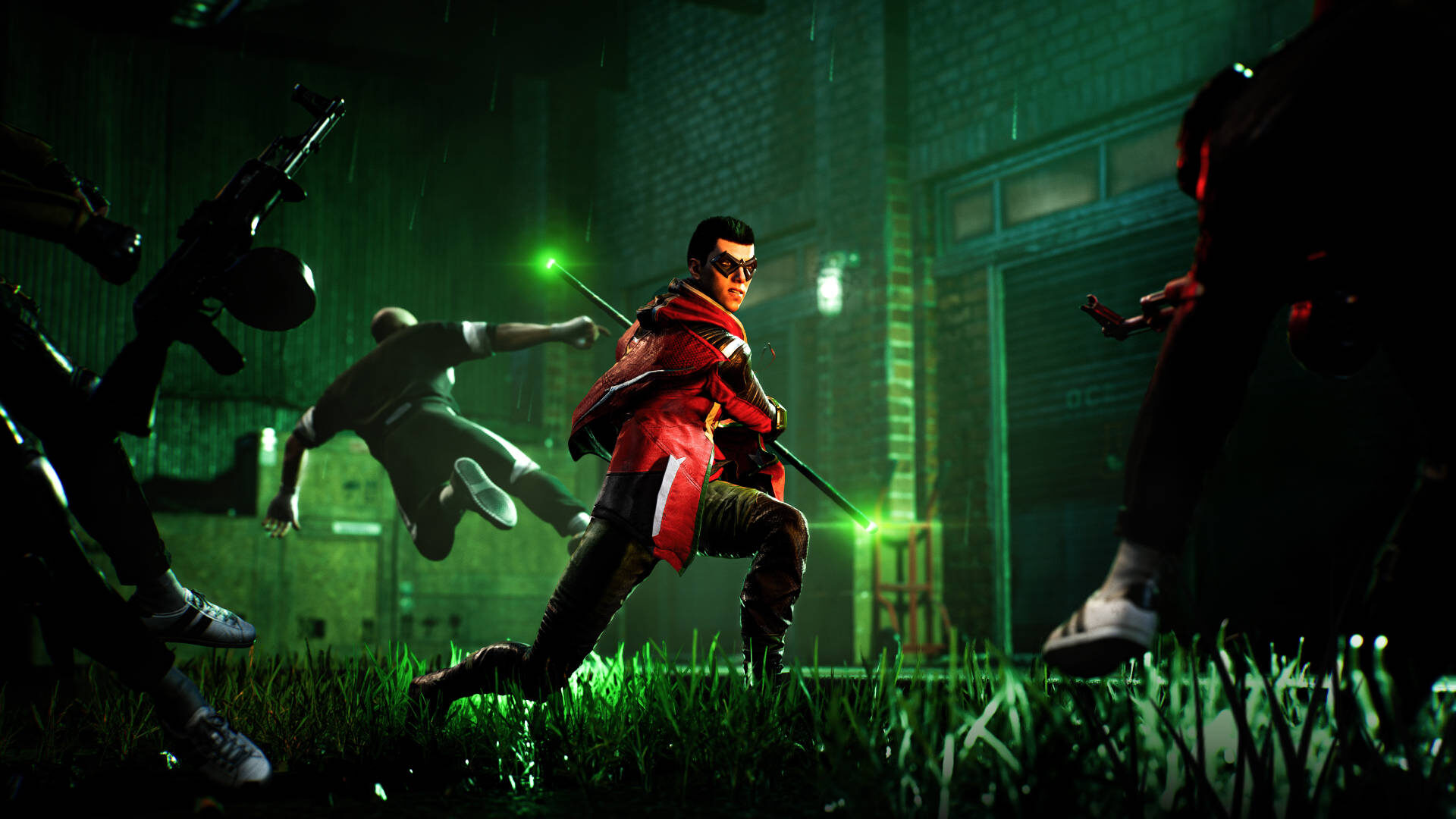
What slightly irked me, however, was the decision to eschew Arkham’s counter-system melee combat. I understand wanting to offer a different take, especially in trying to make this feel more like an RPG, but it feels like this was fixing something that wasn’t broken. I really loved the rhythm of the Arkham system, and was shocked at how much I had to unlearn as my muscle memory kept having me trying to do Arkham-style counters until I was already a quarter of the way through Gotham Knights. That’s how synonymous that combat system has become to Batman, and superhero games in general, in my mind.
I can appreciate Gotham Knights’ system for what it is. It works. It’s just a simplified offensive approach with fewer buttons doing more work, and this will play well for potential newcomers to Batman games. Personally, though, I still prefer the more cinematic-looking Arkham combat, where I can catch or interrupt foes during their offense and immediately turn it back on them, especially as the Arkham games also did a better job of signaling enemies who were going to attack from off-screen.
One way to better cover your backside when you’re being swarmed by enemies is to play with a buddy. Gotham Knights offers drop-in/drop-out two-player co-op, and this is another big bright spot for the game. I played an early story mission with Josh from EGM. I was Robin and he was Red Hood, which was a great combo because the characters really compliment each other well. He had already played the mission we were tasked with, but got extra XP for running it again with me. Working together to take down bad guys as a Dynamic Duo added another level of enjoyment to the game for me, and what was great was when the mission was over, we could stay in my Gotham City and go explore separately. Only when starting another story mission did we have to actually be together. I will say the server stability was a little shaky, but this was also a week before launch and I was told there were still kinks being worked out when we had played.
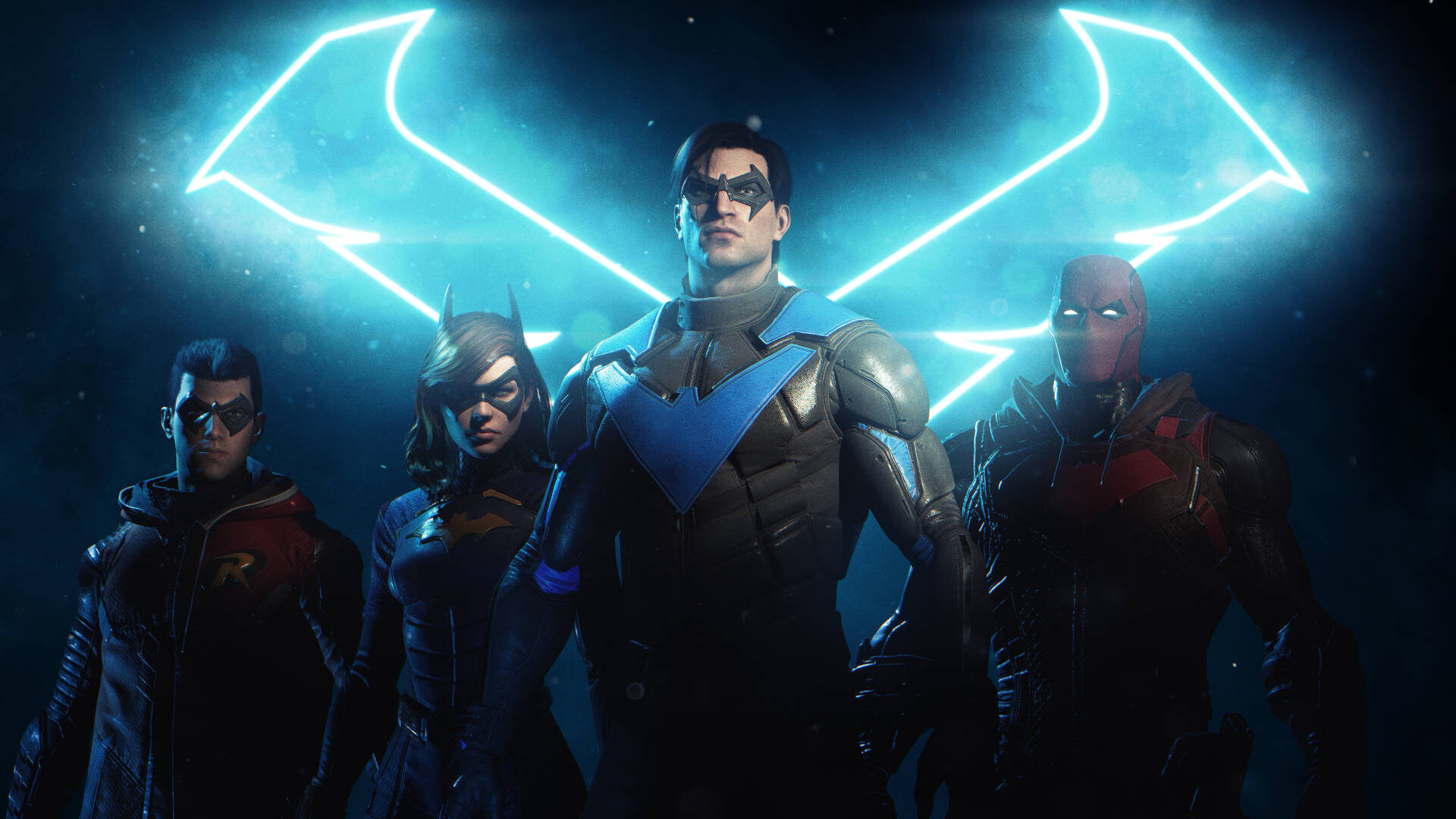
There is a very solid core here in Gotham Knights. Gotham City is the best it’s ever looked, and it’s been too long since we’ve been able to explore it in a game. But as beautiful as the city is, we’re not here to sightsee. The combat and traversal systems are a clear step down from the Arkham games and the chase for gear can become a grind very quickly as you continuously repeat the same half-dozen side activities. The overall narrative is also appallingly short, leaving me wondering where the rest of the game is. Simply put, Gotham Knights feels like it’s just scratching the surface of what it could do with the Bat-family, and so in the end it might be best left for only the most diehard of Dark Knight aficionados desperate for their crime fighting fix.
| ★★★☆☆Gotham City might never have looked better, but Gotham Knights’ gameplay repetition and lack of length to the main narrative might deter all but the most hardcore Batman fans. Co-op adds a fun layer to all the crime fighting, and every character feels truly different from one another, even if the combat system takes some getting used to. Overall, there is a solid core here that hopefully can be built on in the future. | Developer Warner Bros. Montreal Publisher Warner Bros. Interactive Entertainment ESRB T – Teen Release Date 10.21.2022 |
| Gotham Knights is available on Xbox Series X/S, PlayStation 5, PC. Primary version played was for Xbox Series X. Product was provided by Warner Bros. Interactive Entertainment for the benefit of this coverage. EGM reviews on a scale of one to five stars. | |






































